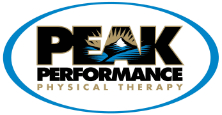What's New for Hand Surgeons Regarding Peripheral Nerve Injuries
In this article, hand surgeons from the Upper Extremity Center of Atlanta Georgia offer a detailed review and update on peripheral nerve injuries of the arm. Their specific focus is tendon transfer treatment for muscles that lose power as a result of the injury. Although age was not specifically stated in the discussion, the patient photos were all of children.
There are three major nerves to the muscles of the arm: the radial nerve, ulnar nerve, and median nerve. There can be a high nerve injury (above the elbow) or low nerve injury (below the elbow).
An injury to any of these nerves produces a predictable loss of hand and/or arm function depending on which muscles have been affected. Whether it is a high or low nerve injury also determines what muscle function has been lost or altered.
If the nerve has not been completely cut and if the damage done is not too severe, it can regenerate. This process of reinnervation and recovery is very slow. Often, it is a wait-and-see proposition. By watching for signs of muscle function, surgeons can gauge how long the patient must wait for complete recovery and whether or not surgery is needed.
When it's clear that the nerve to an individual muscle isn't going to recover, then surgery is done to transfer a tendon to take over the function of the muscle no longer innervated by the damaged nerve. The surgeon can't take any tendon. It must be one powerful enough to accomplish the task needed. The donor tendon must also move like the tendon it is replacing in order to provide the function needed.
The timing of tendon transplants is a matter of considerable debate. Early transfers (done within the first weeks after injury) create what is called an internal splint. An internal splint works much like and external splint (one that is strapped on around the arm). The splint holds the arm in place so the tendons and ligaments don't get overstretched or the joints contracted (so tight it can't move fully).
Tendon transfers can be delayed by weeks to months (up to 18 months). If a tendon transfer is not done right away, an external splint is applied and worn as directed. When it is clear that recovery is not possible, then surgery is performed. Nerve recovery may be spontaneous as a result of the normal, natural healing process. Or it can be helped along by surgery to repair damage to the nerve.
To help surgeons evaluate patients in possible need of tendon transfers, the authors provide detailed instructions in examination techniques. Understanding the anatomy (location of nerves and the muscles they supply) and what to expect in recovery is essential. This knowledge aids in making the decision about timing of tendon transfers as well.
Once it is clear that surgery is needed, the surgical technique for each procedure (for all three nerves) is described. The authors provide many step-by-step color photos of the harvesting and suturing methods for each nerve injury. Placement of the tendon attachment and how to judge the right amount of tension using wrist (thumb or finger) motion are described.
Other factors the surgeon must take into consideration when planning and carrying out a tendon transfer are 1) what's needed to restore joint motion to all the joints of the affected finger(s), 2) what the thumb, finger, hand, or wrist will look like after recovery, and 3) whether or not the patient will be able to perform functional activities like grip a key, open a door, or pick up a heavy object.
Surgeons can benefit from the experiences of the authors as the authors describe techniques that work well, methods that have failed for them, and what they consider "good alternatives" among the various procedures possible.
And although the surgeon's role is very important, recognition is given for the value and benefit of a multidisciplinary (team) approach. That team is made up of the patient, parents (if the patient is a child), nurses, therapists, and electrodiagnosticians (nerve testing). Everyone's contribution to the patient's care is a valued part of patient care, recovery, and rehabilitation.
Reference: Joshua A. Ratner, MD, et al. Update on Tendon Transfers for Peripheral Nerve Injuries. In The Journal of Hand Surgery. August 2010. Vol. 35-A. No. 8. Pp. 1371-1381.
